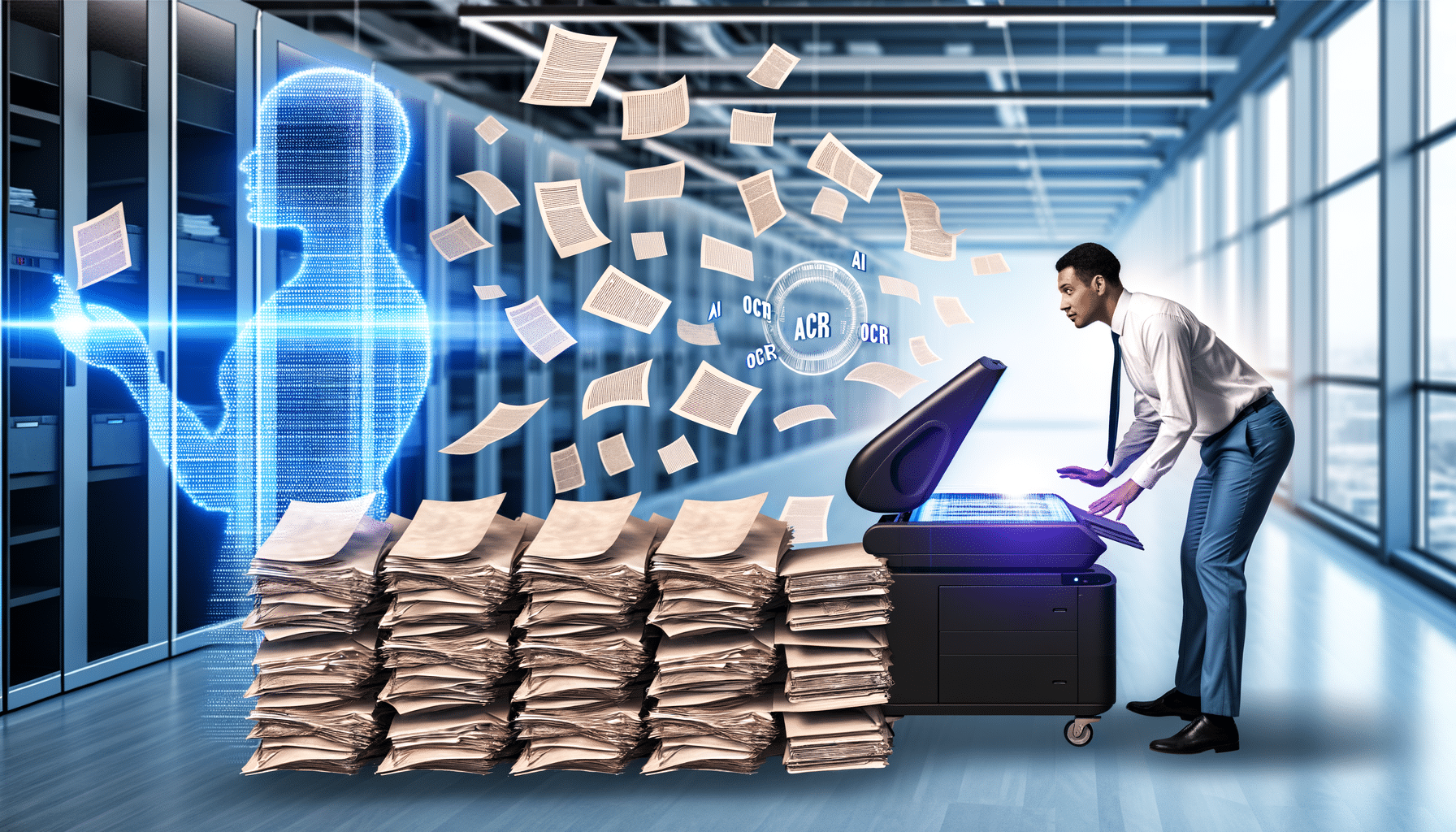- Digitization
- May 3, 2023
AI and Optical Character Recognition (OCR) in Document Digitization

In today’s rapidly evolving digital landscape, the need for efficient document management is more critical than ever before. As organizations strive to streamline their operations and minimize errors, the role of technology becomes indispensable. One of the most transformative technologies in recent years is Optical Character Recognition (OCR), empowered by Artificial Intelligence (AI). Together, AI and OCR are revolutionizing document digitization, enhancing efficiency, accuracy, and accessibility for businesses around the globe.
Understanding the Basics of OCR Technology
Optical Character Recognition (OCR) is a technology that allows the conversion of different types of documents, such as scanned paper documents, PDF files, or images captured by a digital camera, into editable and searchable data. By analyzing the text in these documents, OCR software can convert them into digital text.
Traditionally, OCR relied on pattern matching to identify characters. However, thanks to advances in AI, particularly machine learning and neural networks, OCR systems have evolved significantly. Modern AI-powered OCR systems can recognize even distorted or handwritten texts with remarkable accuracy, thanks to their ability to learn from context and patterns.
How AI Enhances OCR for Document Digitization
AI enhances OCR by providing sophisticated capabilities such as:
- Improved Accuracy: AI algorithms, especially deep learning models, boost OCR’s accuracy rates by recognizing a wide variety of fonts and handwriting styles.
- Contextual Intelligence: AI empowers OCR to understand the context surrounding the text, allowing it to correct transcription errors intelligently.
- Language Flexibility: AI enables OCR systems to handle multiple languages and dialects, broadening its application scope significantly.
Incorporating AI into OCR transforms it from a mere text recognition tool into a comprehensive document digitization solution.
Benefits of AI-Powered OCR in Document Digitization
The fusion of AI and OCR offers numerous advantages:
- Enhanced Efficiency: Automating the conversion of physical documents to digital formats saves time and reduces manual labor.
- Increased Accessibility: Digital documents are easier to store, access, and share, eliminating barriers tied to paper-based systems.
- Error Reduction: AI-driven OCR minimizes human errors in data entry, improving data quality and reliability.
- Cost Savings: By streamlining operations and improving efficiency, companies can achieve significant cost reductions.
Real-World Applications and Industries Benefiting from AI & OCR
Diverse industries are adopting AI-powered OCR for document digitization, including:
- Finance: Banks and financial institutions utilize it to digitize checks, invoices, and receipts, enhancing transaction speed and accuracy.
- Healthcare: Medical records and prescriptions are digitized to improve patient care and operational efficiency.
- Legal Services: Legal firms leverage this technology to transform case files into digital archives, simplifying document retrieval and compliance.
The benefits are clear: faster processing times, reduced physical storage needs, and improved data accessibility.
Overcoming Challenges in Document Digitization
Despite its advantages, implementing AI and OCR isn’t without challenges:
- Quality of Source Material: OCR performance can be hindered by low-quality or poorly scanned documents.
- Complex Formatting: Handling complex document layouts or highly stylized texts can be difficult for even the most advanced systems.
- Security Concerns: Ensuring data security and compliance with regulatory standards is crucial when digitizing sensitive information.
Mitigating these challenges involves continuously refining algorithms and maintaining rigorous data protection protocols.
Maximizing the Potential of AI and OCR
To unlock the full potential of AI and OCR in document digitization:
- Integrate with other digital transformation initiatives to create a holistic ecosystem.
- Continuously update technology to leverage the latest advancements and maintain competitive edge.
- Train employees and adapt workflows to maximize the benefits offered by digitization.
Conclusion
Incorporating AI and OCR into document digitization processes is not simply a technological upgrade—it’s a strategic imperative. By converting physical documents into digital formats efficiently, organizations not only streamline their operations but also unlock new avenues for innovation and growth. For anyone looking to modernize their record management systems, exploring the capabilities of AI and OCR could be the game-changer. Connect with me to learn more about transforming your document management processes and how RecordsKeeper.AI can be at the forefront of this revolution.
To keep up with the latest insights and innovations in the AI space, follow my journey as I continue to explore, innovate, and lead in the tech industry.
Toshendra Sharma is the visionary founder and CEO of RecordsKeeper.AI, spearheading the fusion of AI and blockchain to redefine enterprise record management. With a groundbreaking approach to solving complex business challenges, Toshendra combines deep expertise in blockchain and artificial intelligence with an acute understanding of enterprise compliance and security needs.
Archives
- December 2024
- November 2024
- October 2024
- September 2024
- August 2024
- July 2024
- June 2024
- May 2024
- April 2024
- March 2024
- February 2024
- January 2024
- December 2023
- November 2023
- October 2023
- September 2023
- August 2023
- July 2023
- June 2023
- May 2023
- April 2023
- March 2023
- February 2023
- January 2023
- December 2022
- November 2022
- October 2022
- September 2022
- March 2019
Want to get more content like this?
Signup to directly get this type of content to your inbox!!
Latest Post
Organizing External Auditor Access
- December 22, 2024
Document Control in Manufacturing Plants
- December 21, 2024
Handling Rush Financial Report Requests
- December 20, 2024
Managing Record Access After Staff Changes
- December 19, 2024





